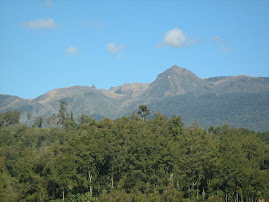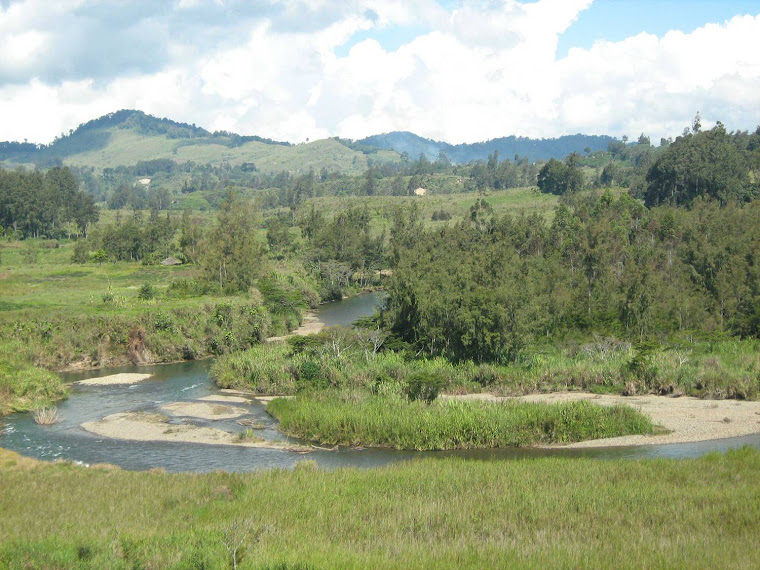By Albert Kaupa Tobby in Beijing
Introduction
TALK about “China’s rise” has dominated discussions among, academics, politicians, businessmen and individuals. On December 09, 2009 US media tracker, “the Global Language Monitor List” listed “the rise of China” as the most read news story of the decade.
The rise of China as an economic superpower has attracted the widest coverage since 2000, surpassing the Iraq war and 9/11 terrorist attack on US. The ranking was based upon the number of citation based upon the Internet and blogspots, including social media, as well as the top 50 000 print and electronic media sites.
While some Chinese experts say it is an attempt by the western media to tout China for their own good and trumpeting the so-called “China threat”, for Papua New Guineans, it is equally important to know and understand the Chinese discourse so that we can engage with them appropriately and constructively.
Therefore, the then PNG Ambassador to the China, H.E. Ambassador John L. Momis GCL, highlighted some very significant facts about China and how PNG can learn and benefit from having a good relation with China.
This commentary will discuss our Ambassador’s thoughts on this much talked topic of the decade (2000 – 2009). Ambassador Momis discuss four important issues regarding the rise of China which include; (i) China’s past and present, (ii), China’s development miracle (iii) peaceful rise of China (iv) counter-arguments on common anti-Chinese sentiments.
Ambassador Momis finally concluded by sharing his views on the anti-Asians sentiments that has spread out throughout Papua New Guinea in May 2009.
Ambassador Momis’ views on China is drawn from his vast experience as politician for more than 33 years and as a diplomat for the past three years representing the Government of Papua New Guinea to the People’s Republic of China (PRC) in Beijing.
H.E. John Momis’ insights about China developed long before his appointment to represent the Government of PNG as Ambassador to the PRC. In 1985 when he was the Deputy Prime Minister he hosted the then visiting President of the People’s Republic of China Mr. Hu Yaobang.
This special commentary is divided into two parts. The first part discusses a brief background on the bilateral relationship between China and Papua New Guinea and Ambassador Momis’s views on China’s past struggles and their leadership determination to transform their society into the third largest economy in the World.
The second part which will be published next week Sunday will continue on Ambassador’s views on China regarding China’s development miracle, peaceful rise of China and counter-arguments on popular anti-Chinese sentiments.
Before discussing Ambassador Momis’ views on China, it is imperative that we get brief background information on the SINO-PNG relations.
Background on Sino-PNG Relations
China and Papua New Guinea established diplomatic relations on October 12th 1976 right after PNG got its independence from Australia in 1975, and since then the relations has been growing stronger and deeper each year.
Papua New Guinea set up its Embassy in Beijing in April 1988 and accredited a resident ambassador. His Excellency Noel Levi was the first PNG Ambassador to China (1988 – 1990), however prior to that, His Excellency the late Sir Joseph Nombri Ambassador to Tokyo, Japan was accredited to both China and South Korea.
Trade relations between China and PNG started in the 1960s, and have developed smoothly since the establishment of diplomatic relations between the two countries. China and PNG have enjoyed closer and stronger relations, and the economic and commercial cooperation between the two countries has gained momentum over the past ten years.
Today PNG is the biggest and the most important trading partner of China among the South Pacific island nations. During his visit to PNG in July 1996, Qian Jichen, then Chinese Vice Primer who is currently the Foreign Affairs Minister signed a trade agreement between the two Governments with his PNG counterpart, thus paving the way for further development of economic and trade cooperation between the two countries.
Other agreements signed between the two countries included Memorandum of Understanding on Promotion for Economic and Trade Cooperation, Agreement for the Promotion and Protection of Investment, Agreement for the Avoidance of Double Taxation and the Prevention of Fiscal Evasion with Respect to Taxes on Income, and Agreement on Fisheries Cooperation.
In recent years, trade between China and PNG has grown rapidly. It constitutes two-thirds of China's trade with the South Pacific island nations.
PNG's commodities exported to China mainly comprise timber and crude oil, while its main imports from China ranges from textiles, garments, light industrial products (such as footwear, suitcases, bags and toys), to machinery and electronic products. China has a big trade deficit with PNG for many years, and PNG is the only country in the South Pacific with a big trade surplus with China.
Since 1976, China has provided economic and technical assistance to PNG, through a number of projects including four complete projects, namely Sir John Guise Sports Stadium, Henganofi Rural Housing Project, Kandep Agricultural Research Center Project, Markham National High School Project, and four technical cooperation projects such as rattan weaving. So far, PNG has received 11 batches of goods and materials donated by the Chinese side.
The number of PNG students studying in China on Chinese Government Scholarship has increased over the past ten years. Today there are about 60 Papua New Guinean students studying in various universities throughout China.
As part of the Chinese Government continuous commitment towards developing human resources and enhancing international cooperation on development, China has offered many short term courses to the Public Servants in PNG over the past decades.
These training vary from Military training, to Forestry and Fisheries Management, etc. PNG is the largest recipient country of Chinese aid among the South Pacific island nations.
H.E. Ambassador John L. Momis GCL, talk about China
French leader Napoleon Bonaparte had an aphorism: "Let China sleep; when she wakes she will shake the world," said Napoleon (1769-1821). Nearly 180 years after his death, this famous aphorism (or cliché, for Sinologists/China experts) by the French military genius has fulfilled. Today we hear and see people talking about the rise of China in almost all aspect of our society.
Despite of having one of the oldest civilizations in the world, China has in the past been through many dynasties (e.g. Song, Qing, Ming dynasties including Mao and the CPC) that consistently encountered internal civil wars, warlordisms, barbarisms and terrorisms from the northern plains and even suffered constant humiliation and domination by foreign invaders.
At one-point in history, not so long ago, China was regarded as one of the poorest country in the world. However Chinese leaders never yield to all these struggles. Instead they persevered with determination to change and improve the lifestyle of their people.
After the fall of the Nationalist Kuomingtan (KMT) Government and the establishment of the People’s Republic of China (PRC) in 1949, under the leadership of Comrade Mao Zedong, industrialization was the key to economic growth in China, thus vast resources was thrown at heavy industry (e.g. steel production), agriculture was exploited and the service sector remained suppressed and centrally controlled. However these strategies proved futile and brought China’s economy to halt.
Then in 1978 the Communist party initiated very strategic reform under the leadership of its new leader, Deng Xiaoping. Deng Xiaoping initiated market reform to state ownership and open up the Chinese economy to international trade and investment.
The outcome of the “reform and opening up” policy under Deng Xiaoping was remarkably successful, as China rose from being economically impoverished and back-warded to being the third largest economy in the world and as scholars’ predicted will soon overtake Japan to become the second largest economy in the world to the United States.
Today China is regarded as the manufacturing hub of the world. With enormous trade surplus and inflows of foreign investment, China foreign exchange reserve has surged to almost two trillion US Dollars which made China the largest owners of US Treasury bills which effectively helped US financed its current account deficit.
Last year (2009) Beijing spent US$50 billion on what will soon become the world’s biggest high-speed train system. The railroad is expected to finish in 2020 with 16 000 miles of track whose main routes include Beijing to Shanghai and to Guangzhou.
The US$50 billion high-speed train system when completed will become the largest, fastest and most technologically sophisticated railway system in the world.
With the fallout of the global economic recession in late 2008, China is one of the very few major economies that kept growing, prompting the West to urge it to pull the world out of the worst economic crisis in seven decades.
Viewed as an important player in global politics, Beijing has committed itself to address major global issues such as the financial crisis, global warming, combating terrorism, stopping nuclear proliferation, and eradicating extreme poverty.
American movie include Fijians as cast and crew
7 years ago








